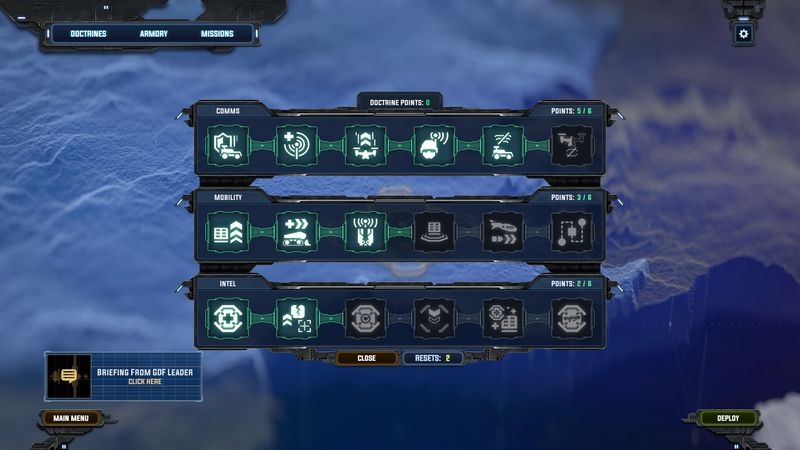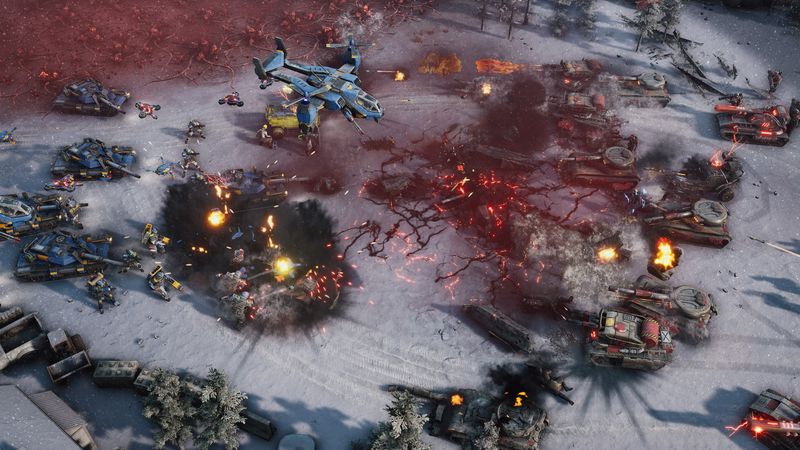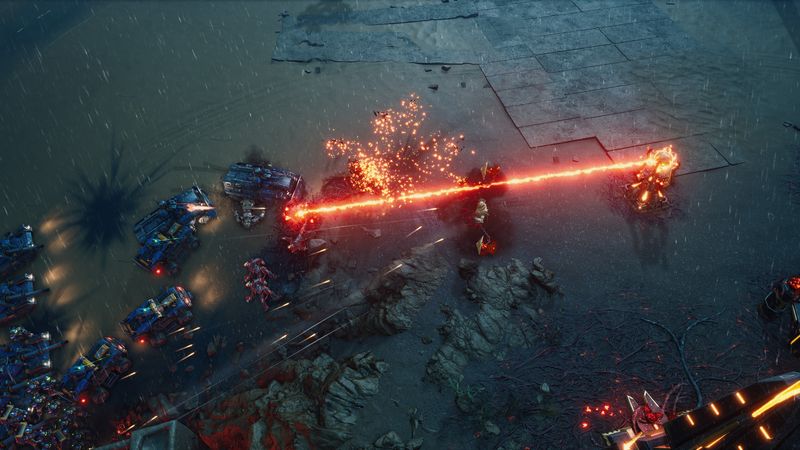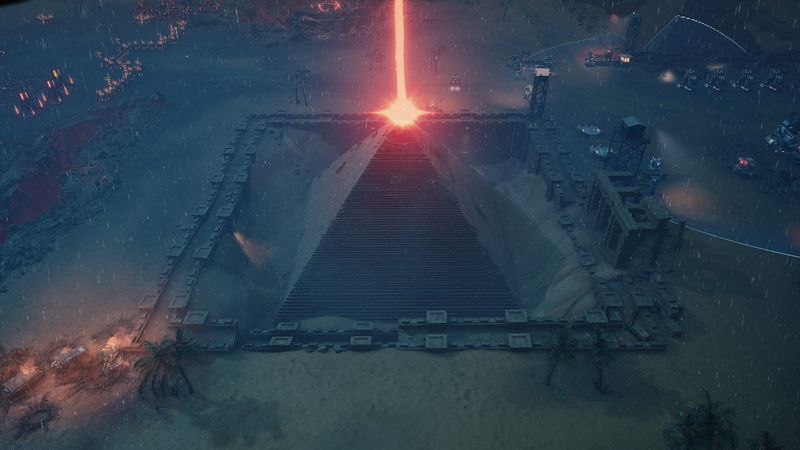I was eagerly anticipating Tempest Rising—a classic RTS with modern polish—and it did not disappoint. As someone who cherishes speedrunning and the intricate art of optimization, I dove deep into this post-apocalyptic strategy epic by Slipgate Ironworks. My time with Tempest Rising has been an unforgettable journey through tough battles, strategic choices, and artful design. Released on April 21, 2025 under the guidance of 3D Realms, this game ranks among the most impressive RTS titles in over a decade.
Overall Impressions
Tempest Rising throws you into a desperate struggle for power and resources on a post-nuclear Earth. At its best, the game exudes raw passion. Every detail feels carefully crafted. I found brilliant moments, such as missions that invite creative strategies. However, minor lapses occasionally pull me out of the immersion. Notably, the absence of a quicksave button in a 2025 release is a glaring oversight. Still, the manual save system works fast and without fuss. The dedicated level design and campaign progression deliver challenge after challenge, proving the developers’ passion in every mission.

Gameplay Mechanics
From the very first mission in the GDF and Dynasty campaigns, I was hooked by the game’s fluid rhythm. Controls feel intuitive, and every action matters. You must command factions smartly, since missiles, reinforcements, and side objectives demand quick thinking. I discovered that each unit serves a distinct purpose, so resource management and rapid deployment are crucial. These mechanics make Tempest Rising a prime study subject for speedrunners. By experimenting with strategies, I learned that mastering resource allocation leads to flawless runs.
One standout moment came when timed reinforcements swung the battle in my favor. The balance between offense and defense kept me constantly engaged. Yet, pathfinding can frustrate when larger units struggle through narrow corridors. These occasional hiccups underscore the challenge of full mastery. Still, they don’t diminish the game’s fun or strategic depth. Overall, the mission variety and fluid gameplay fuel my passion for speedrunning, making every session a fresh test of skill.

Story and Characters
Tempest Rising boasts immersive storytelling that complements its gameplay. The post-apocalyptic setting is richly woven into the lore, evoking vivid imagery of an Earth struggling to recover amid nuclear devastation. I found myself drawn into the dual narratives of the GDF and Dynasty campaigns, each with a unique tone. The game deftly balances moments of subtle political intrigue with explosive battlefield decisions. I was particularly struck by the character dynamics that play out during mission cutscenes. Although the game does not feature Full Motion Video (FMV), the in-engine cutscenes effectively capture the mood and drive the narrative forward.
While the character development might not be as deep or layered as some narrative-driven games, the context provided in the cutscenes and mission briefings is enough to evoke empathy and strategic insight. There is a third faction mentioned, which has piqued my interest. It remains unclear if this faction will offer a campaign experience or exist solely in skirmish mode. This mysterious element heightens the replayability factor and sparks curiosity, especially among players who delight in delving deeper into game lore.

Visuals and Graphics
Visually, Tempest Rising is a marvel. Utilizing the latest advancements in UE5, the game exhibits stunning detail while maintaining superb performance. The art direction captures the grim aesthetic of a post-nuclear Earth and infuses it with vibrant, lifelike elements. I marveled at the diverse maps, all designed with care and attention to tactical detail. The level design is both beautiful and functional; each terrain element seems to play a role in the overall atmosphere of conflict. Despite the complexity of the graphics engine, I experienced no frame drops, even when unleashing artillery barrages that tested the system’s limits. This technical prowess further underscores Tempest Rising as a benchmark in modern RTS design.

Sound and Music
The sound design in Tempest Rising deserves special mention. Music in an RTS is a critical element, and the soundtrack here is nothing short of phenomenal. The game draws inspiration from legendary composer Klepacki, whose influence is evident not only in the score but also in its integration with gameplay intensity. In some instances, the music shifts subtly, enhancing the gravity of a turning point in battle or infusing hope at decisive moments. Sound effects are crisp and meld seamlessly with visuals to heighten the sense of urgency and scale in large conflicts. The high caliber of the audio design notably contributes to the game’s emotional impact. Although I encountered an isolated concern from a player about the EULA collecting detailed RAM information, my personal experience with the audio was purely immersive and uplifting.
Difficulty and Replayability
The game’s difficulty is finely tuned across its multiple campaigns. The GDF campaign appeals to those who enjoy a gradual ramp-up in challenge, whereas the Dynasty campaign delivers a steep challenge that eases later in the campaign—if you choose the setting. This dynamic range allows players of all skill levels to find a suitable challenge. I devoted over 40 hours to mastering the campaigns, often retrying certain missions to perfect the timing and deploy optimal strategies. This deep replayability is a significant draw for speedrunners and strategy enthusiasts alike.

Notably, the side-objectives provide both short- and long-term rewards that keep each mission fresh. These missions encourage a mix between aggressive maneuvers and tactical retreats—an area where my personal speedrunning strategies shine. Despite the absence of a quicksave function and a scarcity of AI-cooperative missions, the overall experience remains robust and engaging. I relish the challenge of reloading, optimizing, and ultimately conquering frustrating battles all over again, knowing that every setback is an opportunity to improve my run times and strategic efficiency.
Conclusion
Tempest Rising stands out as a refreshing and masterfully designed RTS. As a passionate speedrunner, I appreciated the game’s balance between challenge and reward. The robust gameplay mechanics, engaging narrative, stunning visuals, and extraordinary sound design made it a joy to engage with. While minor quirks like pathfinding issues and the missing quicksave button slightly mar an otherwise polished presentation, they do little to detract from the overall experience.

For RTS enthusiasts looking for a game that both challenges and rewards meticulous strategy, Tempest Rising is an absolute must-play. I offer it a solid 4.5 out of 5 stars. Its blend of passion, technical sophistication, and creative challenge makes it a standout release in the genre. I eagerly anticipate what future developments or potential expansions Slipgate Ironworks™ may have in store. For anyone who values authentic, challenging, and beautifully crafted RTS action, Tempest Rising is a true gem that will undoubtedly become a classic in the modern era of strategy gaming.

